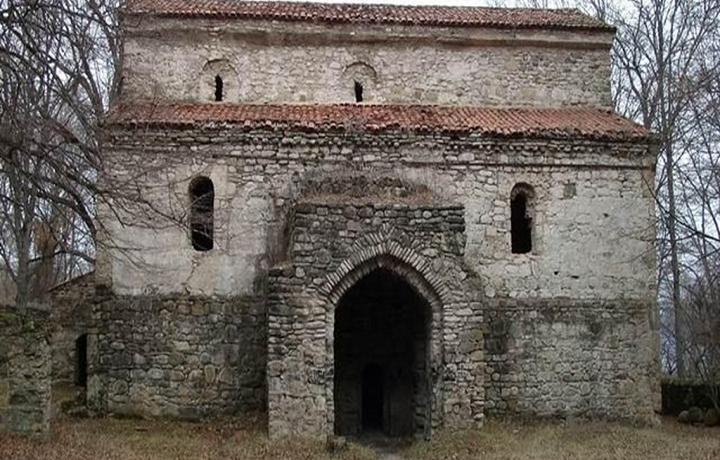Akura Monastery (Region of Kakheti)
Akura Monastery (Georg. აკურის მამა დავითის მონასტერი) – Historical sources that have survived to our time mention that even in the early Middle Ages, rural settlement Akura (Georg. აკურა) was a place of active cultural and economic life of Georgians. In ancient times, Akura was located even higher – in the upper part of the gorge of the river – Akuris Khevi (Georg. აკურის ხევი). In these places, traces of residence have been preserved to this day and which is still called -«Nakalovrebi» (threshing floor). In the same area, in a hard-to-reach rock, a huge cave has been carved. According to oral sources, people who fled from different parts of Georgia, mainly from Kartli region, hid in the cave; According to the second version of the legend, the cave was used many times by local residents as a shelter during the invasion of the Lezghins.
1.5 km from the top of the modern location of the village of Akura, in the middle of a picturesque pine forest, there is an old monastery complex – «Akuris Mama Daviti». (Father David), founded by the famous church figure – Ilarion Kartveli ( Ilarion Georgian) (822 – 875). The main building is a large, three-aisled basilica, built of cobblestone and brick. By the nature of the plan and facades, the basilica is one of the earliest and, moreover, a well-preserved example of Georgian temple architecture. This is a monument of the transition period (II half of the 7th century – I half of the 10th century). On the western wall of the church, small fragments of the Nativity and Assumption scenes have been preserved. On the territory of the monastery, enclosed by a fence, the remains of a cellar and other agricultural buildings have been preserved.





Comments